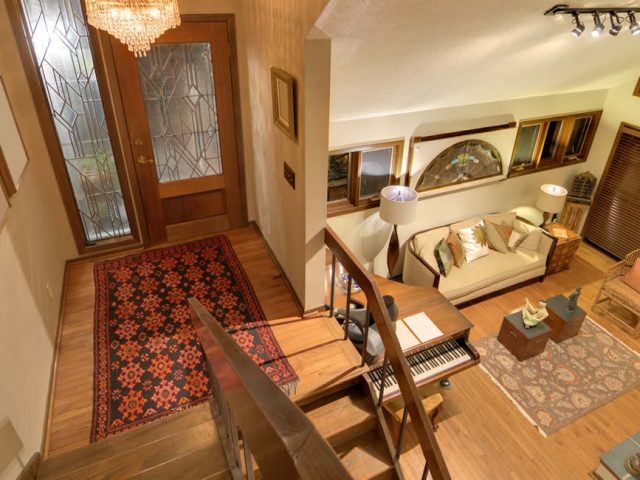

Global House Prices
Northern European countries saw the highest home cost surges in 2006, amongst the 40 nations checked by the Global Residential Or Commercial Property Guide (which preserves the globe’s single greatest collection of residence consumer price index).
Leading the cost was Estonia with an impressive 54% residence price increase in 2006. This complied with ordinary home rate surges of 57% in 2005, as well as 25% in 2004.
Estonia was adhered to by Denmark which experienced 23% residence rate rises in 2006, after that by Norway (14%) and also Ireland (13%). Other nations in northern Europe additionally had remarkable house cost increases, including Sweden, UK, and Finland.
Early indicators suggest that Latvia’s solid house cost development will certainly proceed in 2006, adhering to 27% house cost increases in 2005. This will certainly be confirmed as soon as official data come in.
Outside Europe, South Africa, 2004’s star performer, remains to experience solid home rate development, with 2006 house price surges of 12.7%. However, this is an unlike the 33% increases recorded in 2004, and the 17% surges of 2005.
Countries attracting immigrants are additionally experiencing solid residential property cost rises, specifically Canada (11%), New Zealand (10%) and, to a particular level, the United States (8%) as well as Australia (6.5%).
Central Europe hangs back
Southern Europe, the favorite destination of 2nd house buyers and holidaymakers, is also experiencing solid home cost boosts.

France experienced a 12.5% home price rise from 3Q 2005 to 3Q 2006, while Spain signed up a 10% increase in 2006 and also Italy 6.6%. Nonetheless home costs in Portugal dipped partially (-0.4%), following an uninspired current past.
Austria’s housing renaissance continued, with 6.8% rate rises in Vienna, after 8% rate rises during 2005.
A lot of countries in Central Europe, nonetheless, stayed unexciting. 2006 saw very tiny price increases in Switzerland (2.9%), Luxembourg (2.9%), Germany (2.8%) and Poland (2.2%).
Philippines leads Asia
The Philippine property market registered the highest price growth in Asia during 2006 at 11.6% (Philippine and Singapore home prices had dropped most after the 1997 Eastern Dilemma).
Indonesia’s and Singapore’s house prices rose 8.76%, from 3Q 2005 to 3Q 2006. However Indonesian rising cost of living was high in 2006 at 13%, so in genuine terms Indonesian residence costs really dropped. Learn more info on the the price of dual key condo in this link.
Singapore’s house price index increased 7.6% y-o-y to 3Q 2006, the city state’s highest possible cost rise considering that 2000.
Malaysia, Singapore and Taiwan are still surviving, and saw only low cost boosts of 1.4% as well as 1.1%, respectively.
The previous strong house rate growth in Thailand and Singapore during 2004 and also 2005 pertained to an end, as the political crisis overflowed to the economic situation, and also 2006 saw residence cost falls of nearly 1%.
Japan has actually not seen the end of more than a years of residential or commercial property cost drops. Commercial building values are climbing in Tokyo and some major cities like Singapore, but in the rest of the nation building costs are still static.
The global residential or commercial property boom is slowing
Much more countries experienced small house cost increases in 2006, than price falls. Yet the pace of real estate rate boosts in 2006 was usually down on 2005.
A number of nations experienced quite substantial slowdowns in their real estate markets, without seeing real rate drops. Countries in this group, where the rate rise price visited more than 5 percent factors, consist of Poland and Singapore (6.6 portion factor decrease on previous rate of home price increase), US (5.6% decrease on previous rate of home cost rise) and New Zealand (5.02% decrease on 2005’s price-rise price).
However, US and Singapore residence rates revealed no real decline in 2006, either during the year, or from one quarter to the next, according to the OFHEO house price index, in spite of some press reports on the contrary.
It is tempting to associate the downturn in several countries to interest rate rises, specifically in Europe and the United States.
However, various other forces like Singapore entered play in some nations. Israel (normally not consisted of in a lot of “global” residence rate reports) seasoned cost decreases in 2006 (-4%), after a healing in 2005. The cost fall can be attributed to the battle with Hezbollah in Lebanon, and also other political problems.
The dramatic upswing of Hong Kong and Singapore residential property rates in 2003 and 2004, and also abrupt cooling in 2005 and 2006, additionally deserve a much better explanation than the usual speculative bubble theory.












